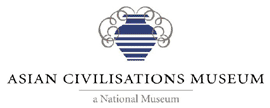
The building of a mosque is considered a meritorious act of piety. The early mosques of Singapore were constructed through community effort, or were built on land and with funds donated by wealthy individuals.
Similar to other parts of the Islamic world, some mosques in Singapore were built on wakaf (charitable endowments). To finance the maintenance of the mosque, it was usual for shophouses or other rental properties to be included in the endowment. Trustees were appointed to manage this wakaf for the Muslim community. Many of the trustees were related to each other and the trusteeship was transferred through the generations.
In 1906, the colonial government formed the Mohamedan and Hindu Endowment Board to oversee the proper management of religious trusts. The board, renamed Muslim and Hindu Endowment Board in 1952, was taken over by Islamic Religious Council of Singapore, which was established in 1968 and is popularly called MUIS. Besides managing wakaf properties, one of the many roles of MUIS is to build and administer mosques in Singapore.
Exhibition is on at the Asian Civilisations Museum till 31 December 2002. This document is part of a joint project of the Asian Civilisations Museum and the University Scholars Programme, National University of Singapore. The text appears here with the kind permission of the Asian Civilisations Museum.
 |
![[Spirit of a Community]](spirit2.gif)
Last updated: February 2002